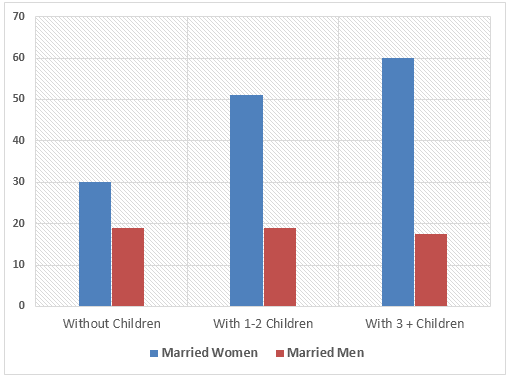SECTION 1
Section One - Questions 1-10
Questions 1-5
Write NO MORE THAN ONE WORD
Section One - Questions 1-10
Questions 1-5
Write NO MORE THAN ONE WORD
VIDEO LIBRARY APPLICATION FORM
EXAMPLE ANSWER
Surname Jones
First names: Louise Cynthia
Address: Apartment 1, 72 (1) ...................................... Street Highbridge
Post code: (2) ......................................
Telephone: 9835 6712 (home) (3) ...................................... (work)
Driver's licence number: (4) ......................................
DOB: 25th Month: (5) ...................................... Year: 1977
Questions 6—8
Surname Jones
First names: Louise Cynthia
Address: Apartment 1, 72 (1) ...................................... Street Highbridge
Post code: (2) ......................................
Telephone: 9835 6712 (home) (3) ...................................... (work)
Driver's licence number: (4) ......................................
DOB: 25th Month: (5) ...................................... Year: 1977
Questions 6—8
Write THREE letters A-F.
What types of films does Louise like?
A Action
B Comedies
C Musicals
D Romance
E Westerns
F Wildlife
Questions 9 and 10
Write NO MORE THAN 3 WORDS .
9. How much does it cost to join the library?
10. When will Louise's card be ready?
What types of films does Louise like?
A Action
B Comedies
C Musicals
D Romance
E Westerns
F Wildlife
Questions 9 and 10
Write NO MORE THAN 3 WORDS .
9. How much does it cost to join the library?
10. When will Louise's card be ready?
SECTION 2
Section Two - Questions 11-20
Questions 11-13
Write NO MORE THAN THREE WORDS for each answer.
Questions 11-13
Write NO MORE THAN THREE WORDS for each answer.
Expedition Across Attora Mountains
Leader: Charles Owen
Prepared a (11) ........................................... for the trip
Total length of trip (12) ................................
Climbed highest peak in (13) ...................................
Questions 14 and 15
Circle the correct letters A-C.
14. What took the group by surprise?
A the amount of rain
B the number of possible routes
C the length of the journey
15. How did Charles feel about having to change routes?
A He reluctantly accepted it.
B He was irritated by the diversion.
C It made no difference to enjoyment.
Questions 16—18
Write THREE letters A-F.
What does Charles say about his friends?
A He met them at one stage on the trip.
B They kept all their meeting arrangements.
C One of them helped arrange the transport.
D One of them owned the hotel they stayed in.
E Some of them travelled with him.
F Only one group lasted the 96 days.
Questions 19 and 20
Write TWO letters, A-E.
What does Charles say about the donkeys?
A He rode them when he was tired
B He named them after places.
C One of them died.
D They behaved unpredictably.
E They were very small.
Prepared a (11) ........................................... for the trip
Total length of trip (12) ................................
Climbed highest peak in (13) ...................................
Questions 14 and 15
Circle the correct letters A-C.
14. What took the group by surprise?
A the amount of rain
B the number of possible routes
C the length of the journey
15. How did Charles feel about having to change routes?
A He reluctantly accepted it.
B He was irritated by the diversion.
C It made no difference to enjoyment.
Questions 16—18
Write THREE letters A-F.
What does Charles say about his friends?
A He met them at one stage on the trip.
B They kept all their meeting arrangements.
C One of them helped arrange the transport.
D One of them owned the hotel they stayed in.
E Some of them travelled with him.
F Only one group lasted the 96 days.
Questions 19 and 20
Write TWO letters, A-E.
What does Charles say about the donkeys?
A He rode them when he was tired
B He named them after places.
C One of them died.
D They behaved unpredictably.
E They were very small.
SECTION 3
Section Three - Questions 21-30
Questions 21-25
Write NO MORE THAN THREE WORDS for each answer.
Write NO MORE THAN THREE WORDS for each answer.
Tim
|
Jane
| |
Day of arrival
|
Sunday
|
(21) ...........................
|
Subject
|
History
|
(22) ...........................
|
Number of books to read
|
(23) ...........................
|
(24) ...........................
|
Day of first lecture
|
Tuesday
|
(25) ...........................
|
Questions 26-30
Write NO MORE THAN THREE WORDS for each answer.
Write NO MORE THAN THREE WORDS for each answer.
26. What is Jane's study strategy in lectures?
27. What’s Tim's study strategy for reading?
28. What is the subject of Tim's first lecture?
29. What’s the title of Tim's first essay?
30. What is the subject of Jane's first essay?
27. What’s Tim's study strategy for reading?
28. What is the subject of Tim's first lecture?
29. What’s the title of Tim's first essay?
30. What is the subject of Jane's first essay?
SECTION 4
Section Four - Questions 31-40
Questions 31-35
Write NO MORE THAN THREE WORDS for each answer.
Write NO MORE THAN THREE WORDS for each answer.
Course
|
Type of course: duration & level
|
Entry requirements
|
Physical Fitness Instructor
|
Example Six-month certificate
|
None
|
Sports Administrator
|
(31) ...............................
|
(32) ............................... in sports administration
|
Sports Psychologist
|
(33) ...............................
|
Degree in psychology
|
Physical Education Teacher
|
4 years degree in education
|
(34) ...............................
|
Recreation officer
|
(35) ...............................
|
None
|
Questions 36-40
Write the appropriate letters A-G against question 36- 40.
MAIN ROLES __
Job Main Role
Physical Fitness Instructor (36)
Sports Administrator (37)
Sports Psychologist (38)
Physical Education Teacher (39)
Recreation Officer (40)
A the coaching of teams
B the support of elite athletes
C guidance of ordinary individuals
D community health
E the treatment of injuries
F arranging matches and venues

